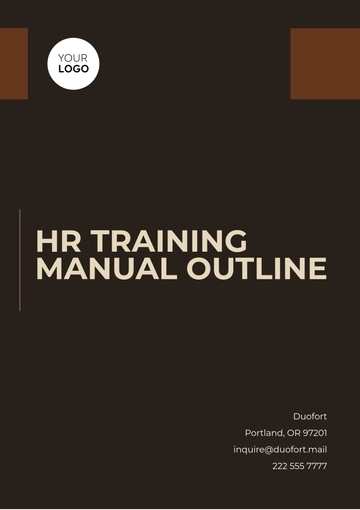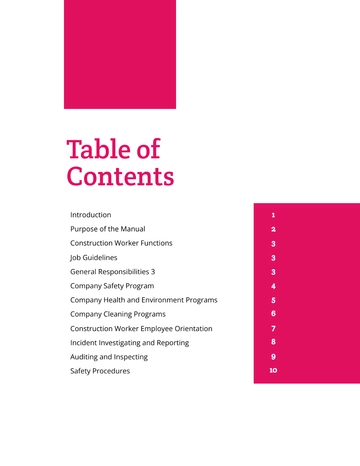Free Nursing Home Alzheimer???s Care Training Manual

I. Introduction to Alzheimer's Disease and Dementia
Alzheimer's disease is a progressive neurodegenerative disorder characterized by memory loss, cognitive decline, and changes in behavior and personality. It is the most common form of dementia, accounting for approximately 60-80% of cases. Other types of dementia include vascular dementia, Lewy body dementia, and frontotemporal dementia.
A. Signs and Symptoms:
Memory loss, especially recent events
Difficulty with problem-solving and decision-making
Confusion about time or place
Changes in mood or behavior
Challenges with communication and language
Difficulty completing familiar tasks
B. Impact on Cognitive and Functional Abilities:
As Alzheimer's disease progresses, individuals may experience increasing difficulty with activities of daily living (ADLs) such as bathing, dressing, and eating independently. They may also require assistance with medication management and mobility. Cognitive decline can impact reasoning, judgment, and safety awareness, requiring a supportive and structured environment.
II. Person-Centered Care Approach
A. Importance of Person-Centered Care:
Person-centered care emphasizes the individuality and autonomy of each resident, recognizing their unique preferences, values, and life history. This approach respects the dignity and personhood of individuals with Alzheimer's disease, focusing on their strengths rather than deficits.
B. Respecting Dignity and Autonomy:
Caregivers should prioritize residents' choices and preferences in all aspects of care, from meal selection to daily activities. This may involve offering simple choices, such as what to wear or which activity to engage in, to promote a sense of control and independence.
C. Individualized Care Planning:
Each resident's care plan should be tailored to their specific needs, preferences, and abilities. This requires ongoing assessment and communication with the resident, family members, and the interdisciplinary care team to identify goals and priorities for care.
D. Incorporating Resident Preferences:
Engage residents in meaningful conversations to learn about their interests, hobbies, and past experiences. Use this information to personalize activities, meals, and social interactions, enhancing their quality of life and sense of well-being.
III. Effective Communication Strategies
A. Communication Challenges in Alzheimer's Care:
Individuals with Alzheimer's disease may experience difficulties with language, comprehension, and expression, making communication challenging for both residents and caregivers. Common communication barriers include memory loss, aphasia, and difficulty organizing thoughts.
B. Verbal Communication Techniques:
Use Simple Language: Speak in clear, simple sentences, avoiding complex vocabulary or jargon. Use short phrases and repeat important information as needed.
Speak Slowly and Clearly: Enunciate your words clearly and at a moderate pace to aid comprehension. Avoid speaking too quickly or mumbling, which can be difficult for individuals with cognitive impairments to follow.
Provide Context: Offer context or cues to help individuals understand the topic of conversation. For example, say, "We're going to the dining room for lunch now," rather than simply stating, "Let's go."
Ask Yes/No Questions: Use closed-ended questions that require a simple yes or no response, as these are easier for individuals with dementia to answer. For example, "Would you like some water?" rather than, "What would you like to drink?"
Use Repetition: Repeat important information or instructions as needed, as individuals with dementia may have difficulty retaining new information. Repetition can help reinforce understanding and memory retention.
C. Nonverbal Communication Techniques
Maintain Eye Contact: Establish and maintain eye contact to convey attentiveness, respect, and engagement. Eye contact can help individuals feel acknowledged and valued during interactions.
Facial Expressions: Use facial expressions to convey warmth, empathy, and positivity during interactions. Smile genuinely to communicate friendliness and approachability, and mirror the individual's expressions to establish rapport.
Gestures and Body Language: Use gestures and body language to supplement verbal communication and convey meaning. For example, use pointing or hand gestures to indicate objects or directions, or use gentle touch to offer reassurance or support.
Active Listening: Demonstrate active listening through nonverbal cues such as nodding, leaning forward, and making encouraging sounds (e.g., "Mmm-hmm" or "I see"). This shows that you are engaged and attentive to the individual's needs and concerns.
Physical Proximity: Maintain an appropriate physical distance based on the individual's comfort level and cultural norms. Avoid invading their personal space, but also ensure that you are close enough to hear and be heard clearly.
Mirroring: Subtly mirror the individual's body language, tone of voice, and demeanor to establish rapport and build trust. Mirroring can help individuals feel more comfortable and connected during interactions.
D. Validation Therapy:
Validate residents' feelings and experiences, even if they seem disconnected from reality. Rather than correcting or contradicting them, validate their emotions and provide reassurance and comfort. Redirect conversations or activities if necessary to maintain a positive and supportive interaction.
IV. Behavioral Management Techniques
A. Common Behavioral Symptoms in Alzheimer's:
Residents with Alzheimer's disease may exhibit a range of challenging behaviors, including agitation, which can be distressing for both residents and caregivers, requiring proactive strategies for management.
Agitation
Aggression
Wandering
Sundowning
Anxiety
Depression
Repetitive behaviors
Hallucinations
Delusions
Sleep disturbances
Inappropriate vocalizations
Shadowing (following caregivers)
Restlessness
Hoarding
Sexual disinhibition
B. Understanding Triggers:
Triggers are factors or situations that can contribute to or exacerbate behavioral symptoms in individuals with Alzheimer's disease and dementia. By addressing underlying causes, caregivers can prevent or minimize the occurrence of behavioral symptoms. Here's a list of common triggers:
Fatigue or tiredness
Hunger or thirst
Pain or discomfort
Environmental changes or unfamiliar surroundings
Overstimulation from noise, bright lights, or crowded spaces
Physical discomfort, such as needing to use the bathroom
Lack of routine or structure
Feeling overwhelmed or frustrated
Misunderstandings or misinterpretations
Loss of independence or control
Changes in medication or side effects
Unmet needs, such as for social interaction or sensory stimulation
Emotional distress, such as grief or anxiety
Physical illness or infections
Transitions or changes in caregivers or routines
C. De-escalation Strategies:
Remain calm and composed when responding to challenging behaviors, avoiding confrontational or punitive approaches. Use redirection, distraction, and soothing techniques to de-escalate the situation and help residents regain their composure.
D. Positive Reinforcement Techniques:
Reinforce positive behaviors with praise, encouragement, and rewards to encourage repetition. Focus on strengths and accomplishments, celebrating small victories and achievements to boost residents' self-esteem and sense of accomplishment.
V. Meaningful Activities and Engagement
A. Benefits of Engagement for Residents:
Engagement in meaningful activities can enhance residents' quality of life, promote cognitive stimulation, and foster social connections. Activities should be tailored to residents' interests, abilities, and preferences, providing opportunities for creativity, self-expression, and enjoyment.
B. Tailoring Activities to Resident Interests:
Get to know residents' hobbies, interests, and past experiences to identify meaningful activities that resonate with them. Offer a variety of options, including arts and crafts, music therapy, reminiscence therapy, and sensory stimulation activities, to cater to diverse preferences.
C. Incorporating Sensory Stimulation:
Engage residents' senses through multi-sensory activities that stimulate sight, hearing, touch, taste, and smell. Use familiar scents, textures, and sounds to evoke positive memories and emotions, enhancing residents' sensory experiences and promoting relaxation and enjoyment.
D. Group vs. Individual Activities:
Balance group activities with one-on-one interactions to meet residents' socialization needs while respecting individual preferences and comfort levels. Group activities promote social engagement and peer support, while individual activities allow for personalized attention and focused interaction.
VI. Safety and Environmental Modifications
A. Creating a Safe Environment:
Ensure that the physical environment is safe and free from hazards to prevent accidents and injuries. This may involve removing obstacles, installing handrails and grab bars, and securing furniture to prevent falls and accidents.
B. Fall Prevention Strategies:
Assess residents' risk of falls and implement appropriate interventions to reduce hazards and promote safety. Encourage residents to use assistive devices such as walkers or canes, and provide supervision and assistance as needed to prevent falls.
C. Wandering Management:
Residents with Alzheimer's disease may wander due to confusion, restlessness, or a desire to explore their surroundings. Implement strategies to prevent wandering, such as door alarms, secure locks, and visual cues to indicate exits and designated areas.
D. Environmental Adaptations for Dementia-Friendly Spaces:
Create a dementia-friendly environment that is calm, soothing, and easy to navigate, minimizing confusion and agitation. Use contrasting colors, clear signage, and familiar landmarks to help residents orient themselves and feel secure in their surroundings.
VII. Care Planning and Team Collaboration
A. Interdisciplinary Care Team Approach:
Collaborate with other members of the care team, including nurses, physicians, therapists, and social workers, to develop and implement individualized care plans. Share information and insights to ensure continuity of care and address residents' holistic needs.
B. Assessment and Care Planning Process:
Conduct comprehensive assessments of residents' physical, cognitive, and psychosocial needs to inform care planning and goal setting. Involve residents and family members in care planning discussions, soliciting their input and preferences to guide decision-making.
C. Family Involvement and Communication:
Engage family members as partners in care, keeping them informed and involved in residents' care plans, progress, and changes in condition. Foster open communication and collaboration to address concerns, answer questions, and provide support to families.
D. Regular Team Meetings and Updates:
Schedule regular team meetings to review residents' care plans, discuss updates or changes in condition, and coordinate care interventions. Share best practices, lessons learned, and updates on new research or developments in Alzheimer's care to enhance team effectiveness and knowledge sharing.
VIII. Self-Care for Caregivers
A. Recognizing Signs of Burnout:
Be vigilant for signs of caregiver burnout, including emotional exhaustion, depersonalization, and reduced sense of personal accomplishment. Monitor your own physical and emotional well-being, acknowledging when you need support or respite.
B. Stress Management Techniques:
Practice self-care strategies to manage stress and prevent burnout. Take regular breaks, prioritize sleep and nutrition, and engage in activities that bring you joy and fulfillment outside of work. Other stress management techniques are as follows:
Deep breathing exercises
Mindfulness meditation
Progressive muscle relaxation
Yoga or tai chi
Taking short breaks throughout the day
Engaging in physical exercise
Journaling or writing about emotions
Talking to a supportive friend or family member
Seeking counseling or therapy
Participating in support groups for caregivers
Setting realistic expectations and goals
Practicing self-compassion and self-care activities
Establishing boundaries and saying no when necessary
Prioritizing tasks and delegating responsibilities
Finding moments of joy and humor in caregiving experiences
C. Setting Boundaries:
Establish clear boundaries between work and personal life, prioritizing time for rest, relaxation, and rejuvenation. Learn to say no to additional responsibilities or tasks that exceed your capacity, advocating for your own needs and well-being.
D. Seeking Support and Resources:
Don't hesitate to seek support from colleagues, supervisors, or support groups for caregivers. Share your experiences and challenges with trusted peers, and seek guidance or counseling from mental health professionals if needed. Remember, you are not alone, and it's okay to ask for help when you need it.
IX. Conclusion
This manual serves as a comprehensive guide for caregivers at [Your Company Name], providing valuable insights, strategies, and resources for delivering high-quality Alzheimer's care. By adopting a person-centered approach, implementing effective communication techniques, and fostering a supportive and collaborative care environment, caregivers can enhance the well-being and quality of life of residents with Alzheimer's disease and dementia.
- 100% Customizable, free editor
- Access 1 Million+ Templates, photo’s & graphics
- Download or share as a template
- Click and replace photos, graphics, text, backgrounds
- Resize, crop, AI write & more
- Access advanced editor
Ensure effective Alzheimer's care training for nursing home staff with Template.net's Nursing Home Alzheimer’s Care Training Manual Template. Editable in our AI Editor Tool, this customizable template provides a structured format for developing comprehensive training manuals covering Alzheimer's disease, including understanding the condition, communication techniques, behavior management, and safety protocols.





























